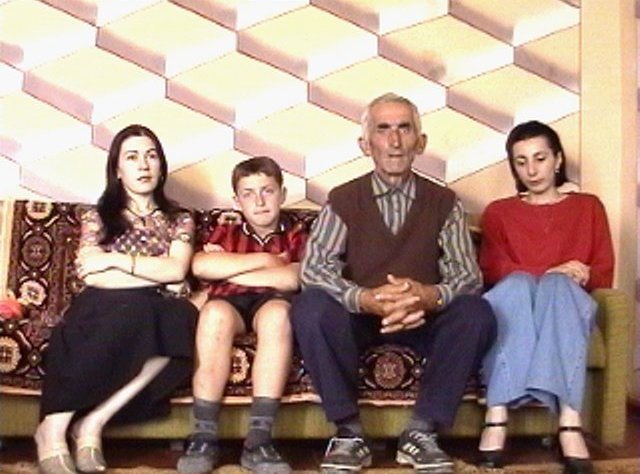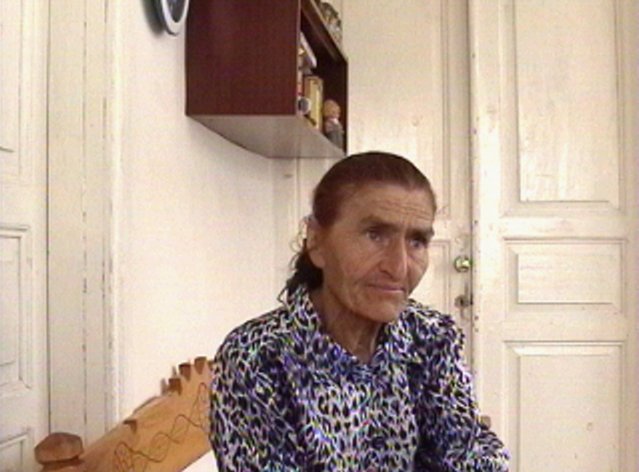
| ECLING | ეკლინგ | ECLING |
Bedrohte kaukasische Sprachen in Georgien
საფრთხეში მყოფი კავკასიური ენები საქართველოში
Endangered Caucasian Languages in Georgia
 |
|
 |
Svan სვანური ენა Svanisch |
 |
სვანური ენა Svanisch Svan |
The Svan language is located in the high mountain region of North West Georgia along the gorges of the rivers Enguri, Cxenis-c̣q̇ali and Ḳodori. Today, linguists assume that it consists of five dialects: The so-called "Upper Svan" dialects Upper and Lower Bal, distributed in the Enguri valley above and below the Bal mountain, and the "Lower Svan" dialects Lashkh, Lentekhian and Cholurian spoken along the Cxenis-c̣q̇ali river (cf. Schmidt 1991, 475 where Cholurian is not yet recognised as a separate dialect, however). The main differences between the dialects and sub-dialects are observable in their sound systems, but there are also considerable divergences in morphology and syntax.
According to the most recent statistics (1997), the number of speakers of Svan does not exceed 30,000 people today, with ca. 15,000 speakers of Upper Svan and less than 12,000 speakers of Lower Svan dialects (there are no reliable numbers available for speakers of the Ḳodori region which belongs to Abkhazia; the esteemed number is about 2,500). Contrasting this with the data given by Džaošvili (1968) according to whom the number of inhabitants of Upper and Lower Svanetia was more than 32,000 in the 1960ies, we can easily see that there has been a steadily decrease of speakers of Svan in recent times. All speakers of Svan are bilingual speaking Georgian alongside Svan, with the latter being used as a familiar means of communication only while Georgian is the language of administration and school teaching everywhere in the Svan speaking areas. It is clear from historical sources that the impact of Georgian has lasted for centuries, with Christianization serving as a primary stimulus.
While the Svan population resisted the unpleasant conditions of the high mountain environment they lived in for centuries, the increasing economic difficulties of the last two decades have brought about a strong tendency towards migration which will result in a radical dissolution of the Svan linguistic communities. Only in a few cases, complete villages were transferred to different regions of Georgia, among them three Svan villages which were founded 50 km south of Tbilisi about fifteen years ago. In most cases, however, families or single persons preferred to leave Svanetia and to settle in other parts of Georgia when their houses were destroyed by avalanches or other natural catastrophes.
Although there were some attempts to create a basis for writing Svan as early as the middle of the 19th century (Anban 1864), Svan has never developed a written standard. It is true that from the beginning of Caucasian studies in Czarist times, a large amount of textual material has been published for both the Upper Svan dialects and the Lower Svan dialects of Lashkh and Lentekh, and several grammatical descriptions and dictionaries have been prepared, mostly for the Upper Bal dialect. Nevertheless, there are considerable gaps in the description of Svan, esp. for the Cholurian variety which was regarded as a subdialect of Lentekhian in former times, and there is practically no material available at all of the Svan language as spoken in the Ḳodori valley which was resettled by speakers of the Upper Svan dialects. It must be added that the published texts do not cover the spoken language in its entirety, most of them representing folk songs, fairy tales or other folkloristic narratives, mostly without translations into Georgian or other languages, and dialogue material is completely missing. This is also true for the phonographic recordings that have been made so far. The first specimen of spoken Svan which is available to scholarly investigation is the recording of a speaker of Upper Bal made by A. Dirr in 1909, preserved in the Phonogrammarchiv of the Austrian Academy (Vienna), which was edited by Gippert (1986). The only web publication of Svan is the tape recording of a Lashkh text which was prepared by Gippert in 1984. There is no audiovisual material available yet. Taking these preliminaries into account, the most urgent task of the present project consists in a documentation of the Cholurian dialect and the varieties of Svan as spoken in the Ḳodori valley for which there is practically no material available so far. Furthermore, it is necessary to document the variation of all Svan dialects contrastively by providing recordings of material spoken or told in similar conditions and covering similar subjects, esp. of everyday life.
| Zusätzliche Informationen | Additional information | დამატებითი ინფორმაცია |
| Im Hintergrund dargestellt ist eine Seite aus der ersten svanischen Fibel, Lušnu anban. | ||
| The background displays a page of the first Svan primer, Lušnu anban. | ||
Copyright Jost Gippert / Manana Tandashvili Frankfurt 2001-2010. No parts of this document may be republished in any form without prior permission by the copyright holder. 24.1.2010.